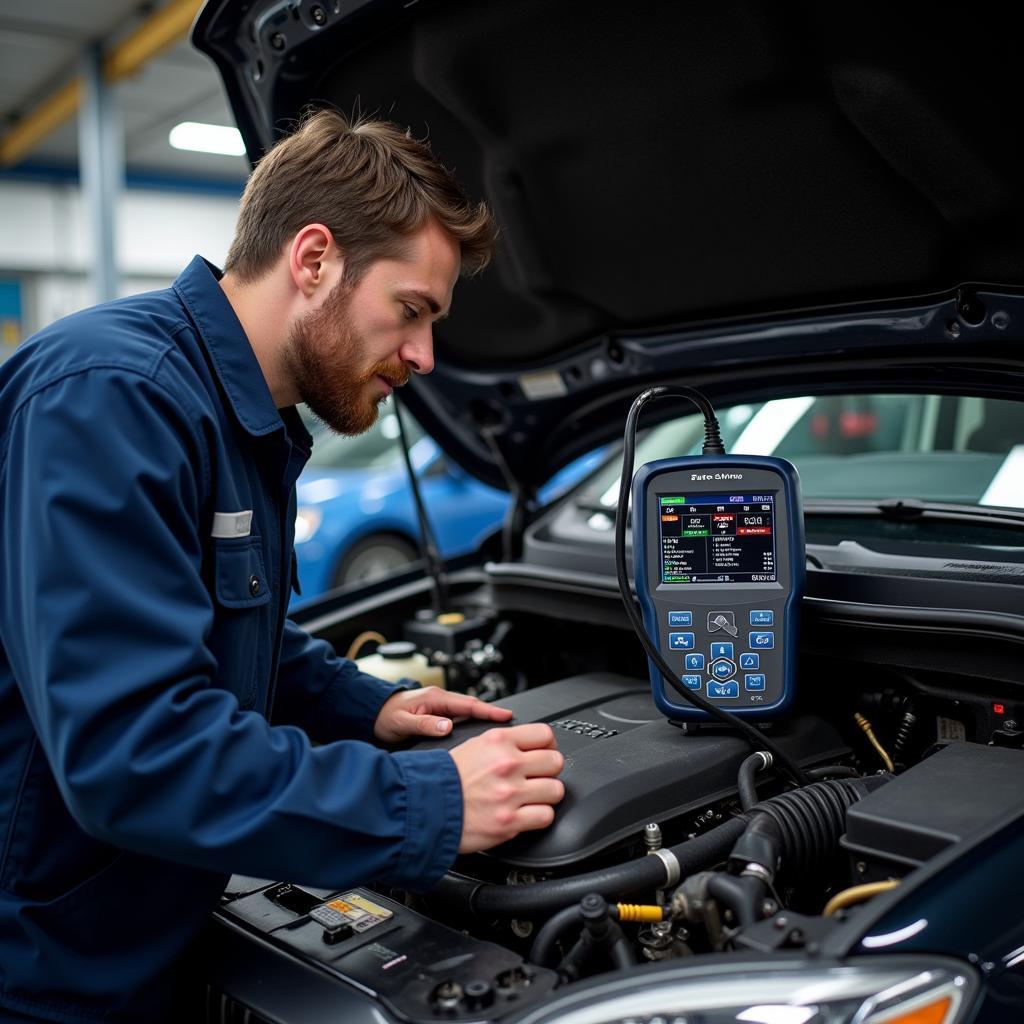Finding a single diagnostic machine that can handle every make and model of car seems like a mechanic’s dream, especially with the increasing complexity of modern vehicles. But is a truly Universal Diagnostic Machine For All Cars a reality, or just a fantasy? Let’s delve into the world of car diagnostics and explore the options available.
 Universal Car Diagnostic Tools
Universal Car Diagnostic Tools
Understanding Car Diagnostic Machines
Before we answer the big question, it’s crucial to understand what car diagnostic machines actually do. These devices act as translators between your car’s computer system and you. They can read and interpret fault codes stored in the car’s ECU (Engine Control Unit), providing valuable information about:
- Engine Performance: Identifying issues with fuel mixture, ignition timing, and emissions.
- Transmission Problems: Detecting problems with gear shifting, clutch operation, and torque converter function.
- ABS and Airbag Systems: Diagnosing faults within these crucial safety systems.
- Other Electronic Modules: Analyzing data from various modules that control everything from power windows to climate control.
The Challenge of Universality
While the concept of a universal diagnostic machine sounds appealing, several factors make it difficult to achieve in reality:
1. Vehicle Communication Protocols: Different car manufacturers use various communication protocols, like OBD-II (On-Board Diagnostics), EOBD (European On-Board Diagnostics), and proprietary systems. A truly universal machine would need to support all of them.
2. Software Updates: Car manufacturers constantly update their software and add new features. A diagnostic machine needs regular software updates to keep pace and provide accurate diagnostics for the latest models.
3. Depth of Diagnostics: Some diagnostic machines offer basic code reading capabilities, while others provide advanced features like live data streaming, bi-directional control (allowing you to activate components), and access to manufacturer-specific systems.
What’s Available in the Market?
While a truly universal machine might be elusive, several options come close:
-
High-End Professional Scanners: These scanners offer comprehensive coverage for various makes and models, including access to manufacturer-specific systems. They are expensive but provide the most in-depth diagnostics.
-
Mid-Range Scanners: These scanners strike a balance between price and functionality. They support OBD-II and EOBD protocols, covering a wide range of vehicles, and offer some advanced features.
-
Budget-Friendly Code Readers: These devices focus on reading and clearing basic OBD-II codes. They are affordable but might not provide detailed diagnostics for all systems.
-
Smartphone/Tablet-Based Adapters: These adapters connect to your smartphone or tablet, allowing you to run diagnostic apps. They offer a cost-effective way to access basic diagnostics and some advanced features depending on the app.
Choosing the Right Diagnostic Machine
The “best” diagnostic machine depends on your specific needs:
Professional Mechanics: Invest in a high-end scanner with comprehensive coverage and advanced features to diagnose and repair a wide range of vehicles.
DIY Enthusiasts: Consider a mid-range scanner or a smartphone adapter that supports OBD-II and EOBD protocols. These options provide a good balance of features and affordability.
Car Owners: A basic code reader can help identify common problems and clear check engine lights, potentially saving you a trip to the mechanic.
Conclusion
While a truly universal diagnostic machine for all cars might remain an aspiration, the market offers diverse options to meet various needs. By understanding your requirements and researching available tools, you can find the right diagnostic machine to keep your car running smoothly.
FAQs About Universal Diagnostic Machines
1. Can I use any OBD-II scanner on any car?
OBD-II scanners are designed to work with most cars manufactured after 1996 in the US and after 2001 in Europe. However, some manufacturer-specific systems might require specialized scanners.
2. How often do car diagnostic machines need software updates?
Software updates are crucial for accurate diagnostics. The frequency varies depending on the manufacturer, but it’s recommended to check for updates at least every six months.
3. Can a diagnostic machine fix my car?
Diagnostic machines only identify problems. They don’t fix issues. You’ll need to use the information provided by the scanner to diagnose and repair the underlying mechanical or electrical fault.
4. Are smartphone-based diagnostic adapters reliable?
The reliability depends on the quality of the adapter and the app you choose. Reputable brands offer reliable adapters and apps that provide accurate diagnostics.
5. What is the difference between a code reader and a scanner?
Code readers primarily read and clear fault codes. Scanners offer more advanced features like live data streaming, bi-directional control, and access to manufacturer-specific systems.
Need More Help?
Finding the right diagnostic tools and interpreting complex car data can be challenging. Our team at DiagFixPro is here to help! Contact us via WhatsApp at +1(641)206-8880 or email [email protected]. We offer 24/7 support and expert advice to help you make informed decisions about your car’s health.

Leave a Reply